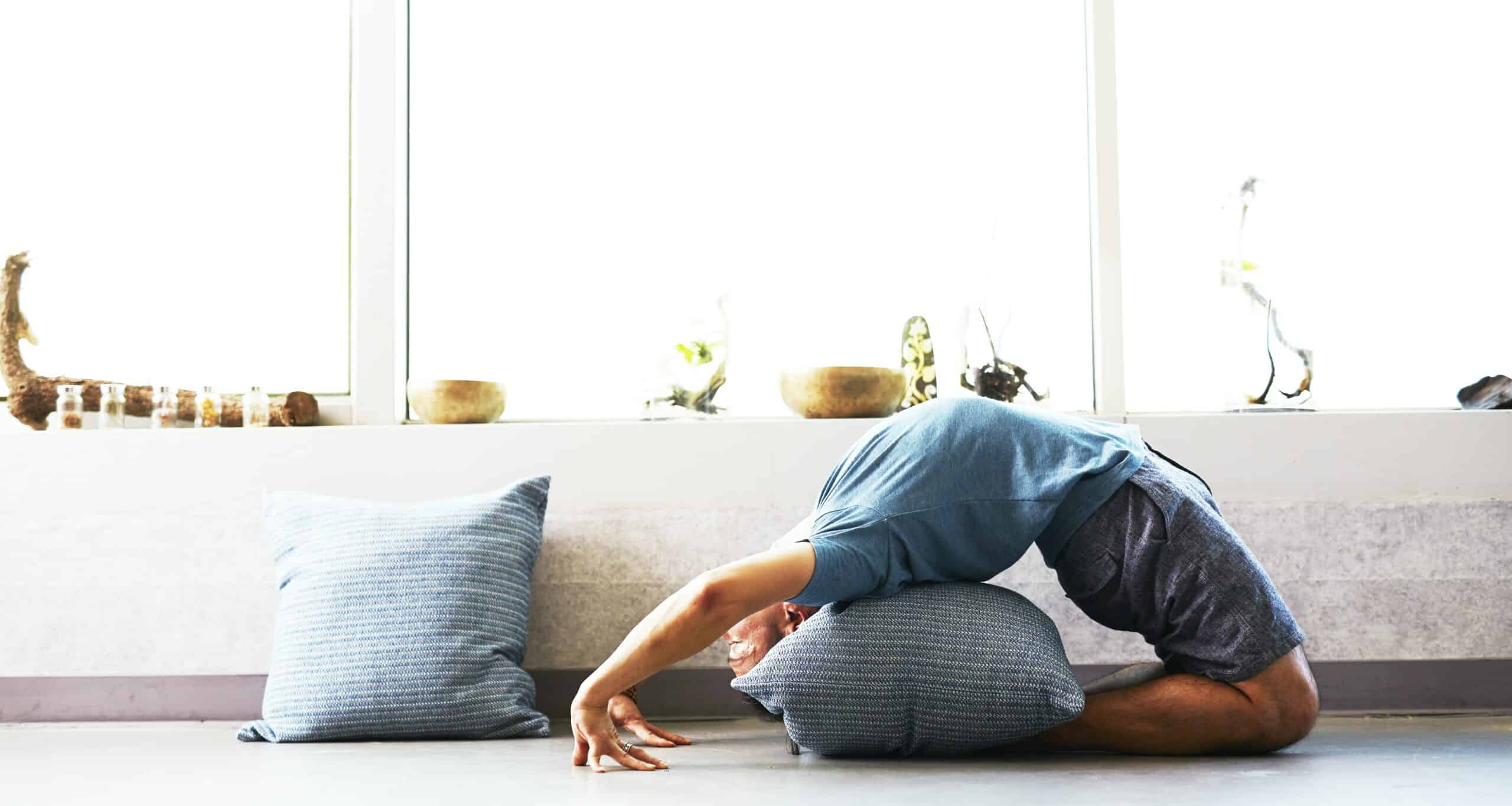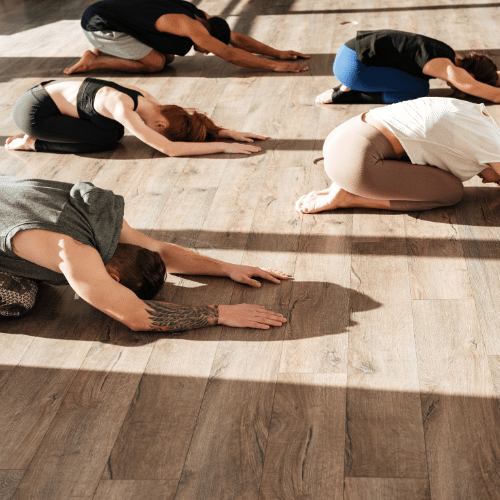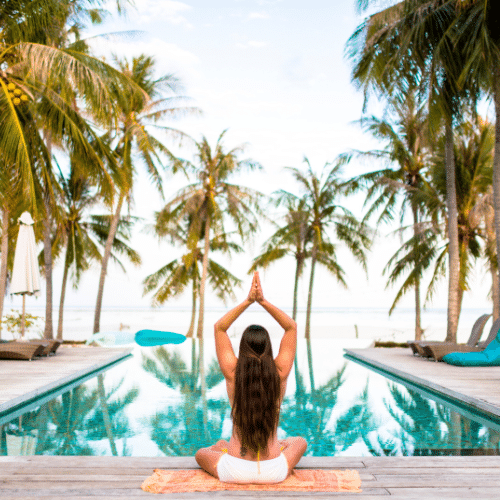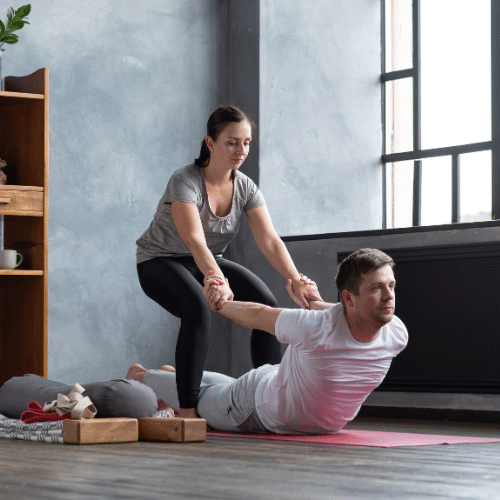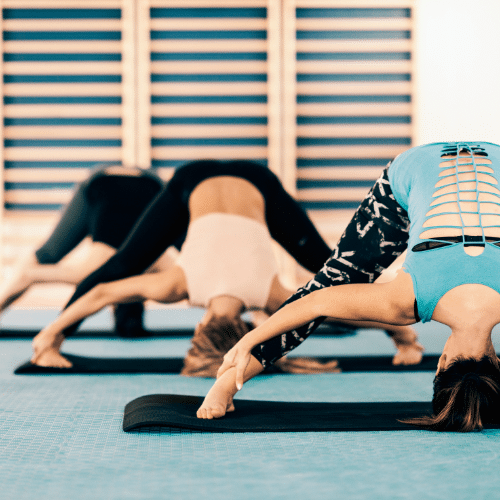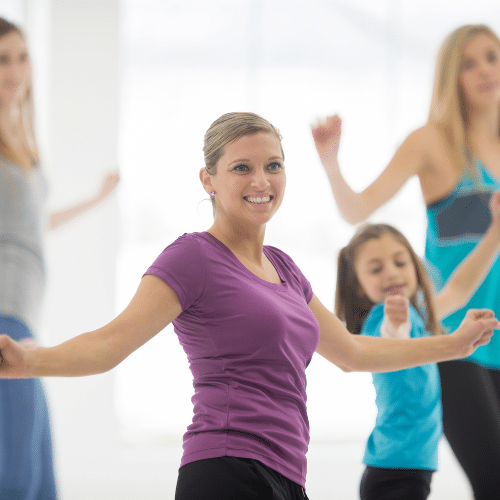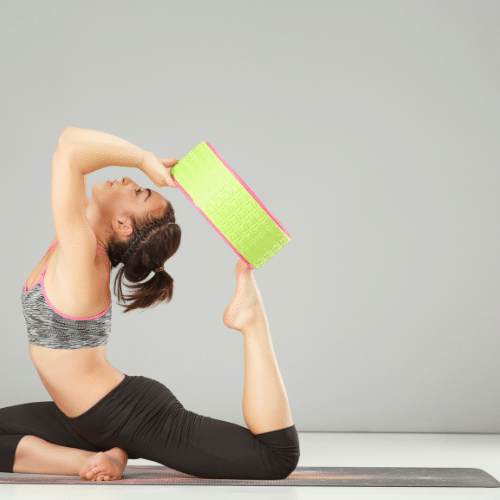Sometimes, leaving home isn’t an option for the avid yogi. Nevertheless, part of what makes yoga amazing is its portability. It requires little to no equipment, making it a form of physical activity anyone can do anywhere, even at home.
There’s no need to be in the studio to reap the art’s physical and mental benefits. Practicing home yoga can be just as effective.
If you’re trying to bring calmness into your life, you can stretch your way to clarity by giving yoga at home a try. Maximize the powerful life-changing effects of yoga by following these ten tips for the home yoga practitioner.
1. Pick a Yoga Area
The yoga area can make or break a home practitioner’s experience.
When choosing a place to do yoga at home, you should select a clean area; after all, you will be on the floor for many Asanas. They won’t be particularly zen if you have to wipe dirt off of yourself.
The second characteristic of the perfect yoga spot is good lighting. There’s something invigorating about practicing yoga in an area with natural light. Also, a well-lit yoga area is particularly beneficial for anyone who uses the art to wake up.
Lastly, a good yoga spot is one with low traffic. Let’s face it — nobody wants any interruptions or spectators when they’re doing yoga at home.
Now, everybody’s home environments are different. But a few spots to consider may be the backyard, the living room, or the patio. The garage may also be an option, as long as it allows light to enter.
For those who fancy an outdoor area for yoga, dirt becomes an inevitable part of home practice. This brings us to our next tip.
2. Invest in a Home Yoga Mat
While people who are doing yoga indoors can technically skip this tip, unless the floor has a thickly carpeted surface, we still highly recommend a yoga mat. For those who are keen on the investment, the mat must have certain characteristics.
First, a yoga mat must be made of non-slip material. Some excellent mats consist of materials like neoprene and thermoplastic. For maximum cushioning and adhesion, you can’t go wrong with a polyurethane or polyvinyl chloride (PVC) mat.
These materials don’t just wick sweat — they also help the yoga mat stay in place for safety.
Second, the mat needs to offer the right level of softness. Granted, nobody fancies a yoga mat that has no rigidity to it. However, the mat should provide just enough cushioning to protect bony prominences like the ankles, hips, and elbows.
The yoga mat is probably the only yoga accessory that’s necessary for home practice. Of course, some are willing to go all-in on home yoga, and for those, other accessories may be necessary.
3. Choose the Right Yoga Accessories
Yes, the beauty of yoga also lies in its minimalistic requirements. However, everybody’s definition of “minimal” differs. When it comes to yoga, some accessories are must-haves for certain people.
Let’s start with accessories for the feet. Some yogis benefit from using toe separators to correct bunions or plantar fasciitis. Since toe separators serve a function that borders on medical, it’s a must for some people and, therefore, non-negotiable.
Yoga socks are another set of accessories that may be worth the investment. Yoga socks benefit home yoga practitioners by adding more traction between the feet and the mat.
Yoga socks come in different builds and lengths. To learn more about these nifty investments for the feet, check out our comprehensive yoga sock guide!
Lastly, other accessories — like a yoga wheel or block — can give yoga setups at home that studio feel. The wheel is especially useful for anyone struggling with full thoracic extension.
4. Stay Safe and Don’t Overexert
Not every yoga practitioner has developed an intuitive awareness of their physical limits. Most wouldn’t have to, since that’s what the yoga instructor is for — to supervise students in the studio. It’s a different ball game outside the studio, especially when it comes to preventing injuries.
Without a trained and experienced instructor, home yoga practitioners may perform positions while unaware of the strain they place on certain joints. While discomfort isn’t uncommon in certain Asanas, any sharp pains should be a red flag. Tingling sensations are also a sign that the pose affects blood circulation, which is also a reason to stop.
So if a pose is causing pain, stop immediately and err on the side of safety. Stretch again, warm up, and perform a position’s regression if necessary.
Being conservative in your yoga approach may not always be fun, but it will stave off injuries and keep you in the game for much longer.
5. Pick Your Time For Practicing Yoga
Not all forms of yoga are the same.
Some, like our Vinaya yoga, are more active and energizing. Others, like Hatha yoga, slow down the heart rate and increase one’s sense of calm. With this in mind, you should choose the type of yoga you’d like to practice based on the time of day you want to practice in.
Vinyasa yoga can energize the body by jacking up circulation and muscle contractions, which makes it perfect in the morning or during the day.
At night, it’s a different story. Hatha yoga can calm the nerves and decrease blood pressure, creating that relaxing feeling that’s conducive to sleep. This makes it the worst type of yoga if you want to practice in the morning and get that extra jolt of energy.
There are many other styles of yoga — the point is to pick the one that addresses one’s needs and the appropriate time to do it.
6. Know That Some Is Better Than None
Many of us struggle to make time for exercise or self-care. Work takes hours off our days, and that doesn’t even take into account commuting.
Even at home, a practitioner can juggle several responsibilities. Adding yoga to the mix will increase the number of tasks you need to perform for the day.
Yes, making time for yoga instead of finding it is a matter of discipline. However, making time doesn’t always mean allocating 45 minutes to an hour; sometimes, doing yoga for just a few minutes is what your schedule allows, and this is perfectly fine.
The point of yoga is to incorporate it in some way into your life. For some, there’s enough time to do yoga for 45 minutes seven days a week. For others, 20 minutes is all they have.
What matters is to do some instead of doing none!
7. Don’t Overthink Your Yoga Wear
It takes time for the average yoga practitioner to prep for a yoga class at s studio. There’s the commute, the occasional hibiscus latte, and the common struggle of figuring out what to wear.
The home practitioner doesn’t need to bother with such details. Being at home, a person can wear whatever they want for yoga — even pajamas!
What’s important is to wear comfortable clothing. By “comfortable,” we mean clothing that allows a full range of motion and doesn’t cut off your circulation. Any clothing that fits this description is perfect for yoga.
8. Think Beyond Asanas
There’s a common misconception among avid yogis that yoga is all about assuming and transitioning to different poses. Indeed, knowing and performing the Asanas are a pivotal part of yoga. However, there’s more to yoga than the Asanas, and many other aspects of the practice are perfect for the time-crunched home practitioner.
For one, practicing yoga at home can allow someone to explore the hidden power of Savasana. Savasana is more than lying flat on the ground — it’s a grounding experience that enables practitioners to refocus, find their centers, and be mindful of their breaths.
Another big part of yoga is its breathing practice, or Pranayama. A home practitioner may also dive deeper into still meditation in seated positions.
The point is that there are many aspects to yoga beyond the Asanas. Practicing at home can provide the perfect opportunity to explore these parts of yoga that most studios tend to breeze over.
9. Ideally, Practice Yoga on an Empty Stomach
Nobody fancies the idea of exercising or doing yoga right after a heavy meal. This is due to the discomfort brought about by being full — a sensation that can make yoga practice unbearable.
Certain positions can pressure the stomach, resulting in a painful experience. Also, the stomach may produce sounds as it digests food. While there’s nothing unhealthy about this, it can be distracting for a home yogi working toward a meditative state.
For the reasons mentioned, it’s best to do home yoga on an empty stomach. A yogi must allow a grace period of two to three hours between a meal and yoga. The longer the time between eating and yoga, the better.
But when hunger becomes too great, a light snack like a banana is best. It’s light, nutritious, and delicious. Most importantly, it’s non-gas forming and won’t result in bloating.
Other snack ideas include a cup of berries, some yogurt, or saltine crackers. The idea is to eat something that digests easily and doesn’t cause bloating.
10. Get the Family Involved
Practicing yoga alone is rewarding in itself. Doing it with the family makes the activity even better!
With yoga, the entire family can experience a calmness that will carry over to the home’s environment. In other words, yoga can help everyone in the family relax, focus, and learn to be mindful of their bodies.
By performing poses and transitions from one Asana to another, family members can also develop better ranges of motion in their joints. The improved range of motion will empower family members of various ages to carry out tasks while staying injury-free.
Your family can also bond into a small yoga community — and a family that does yoga together stays together!
So, let your family in on your zen experience. You’ll be glad you did, and your spouse and kids will thank you!
Give Yoga at Home a Chance with These Tips!
Yes, practicing yoga at home can be just as rewarding as doing it in a studio. By following the tips we’ve shared, you’ll get the most out of home yoga as you find your center where you are.
If you need inspiration and guidance for your home yoga journey, we offer live Zoom yoga sessions. All sessions are live streamed to make you feel like you’re right at our studio.
Learn more about our Zoom yoga sessions at Zuda Yoga to find zen in the comfort of your own home!


